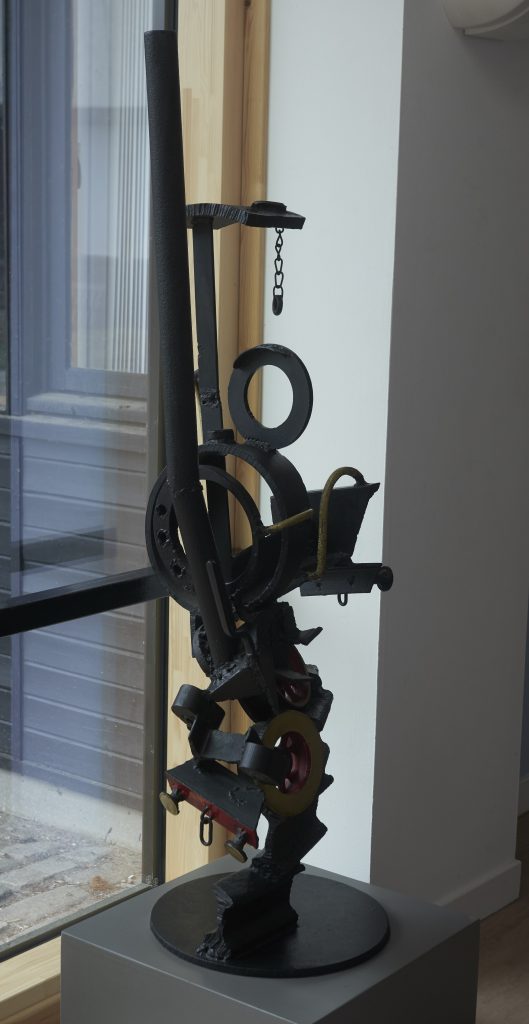This week’s #BriginColour focuses on a Brig cover from 1977. We thought we would look at one artwork which was added to the Art Collection in 1977.

Locomotive Descending a Staircase is the work of George Wyllie and was purchased for the Art Collection from the Macrobert Gallery in 1977. Glasgow’s industrial past is a recurring theme in Wyllie’s work, and this sculpture is a nod to the city’s status as the engine room of the British Empire.
Known for his commitment to art for everyone, Wyllie was a social sculptor whose most famous works include Straw Locomotive and Paper Boat, both of which strived to ask questions about the decline of industrial Clydeside.
In May 1987 the Straw Locomotive hung over the empty Clyde, suspended for just a few weeks, waiting for a ship that never came. It was taken to Springburn on June twenty-second and burned there in a Viking ceremony, marking the loss of the locomotive industry which had once flourished there. As a piper played a lament, the burnt-out chasis revealed a steel question mark, raising the question: why was Springburn’s industry, and eventually the district itself, destroyed? The event was witnessed by a crowd which included those who had worked in Springburn’s locomotive industry.
In 1989 George Wyllie built his 78 foot long Paper Boat, ‘QM’ as a celebration – and memorial – to the city’s shipbuilding industry. Launched from the Finnieston Crane – like his Straw Locomotive of 1987 – the Paper Boat sailed the Clyde, the Thames and eventually the Hudson river in New York. It berthed outside the World Financial Centre in 1990 and made front-page news in the Wall Street Journal. The Paper Boat focused on the decline of Glasgow’s shipbuilding industry.
Locomotive Descending a Staircase is on permanent display in Gallery One of the Pathfoot Building and artworks by George Wyllie are held in the collections of museums and galleries including the Kelvingrove Art Gallery, Smith Art Gallery, Whitworth in Manchester and the Scottish Maritime Museum amongst others.
Wyllie’s sense of humour, his mischievous persona and his insistence that art was a public rather than private matter had a subtle but enduring influence on subsequent generations of artists in Scotland. The Scottish Political Archive at the University has a photograph in its collections of a George Wyllie sculpture. Taken in 1993 the photograph shows a sculpture in the shape of a cannon located outside the Democracy for Scotland vigil on Calton Hill. It was pointed at St Andrews House, the home of the Scottish Office.
